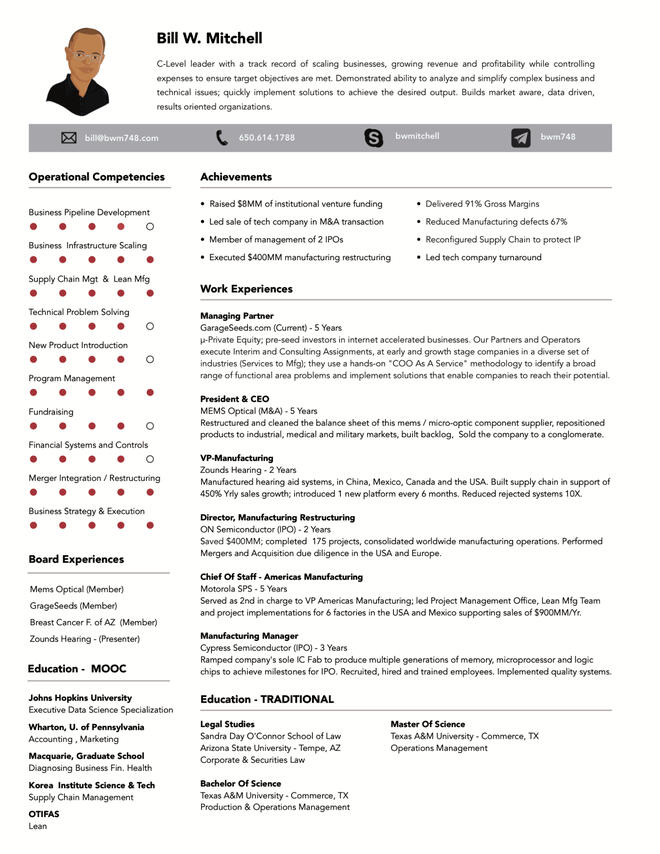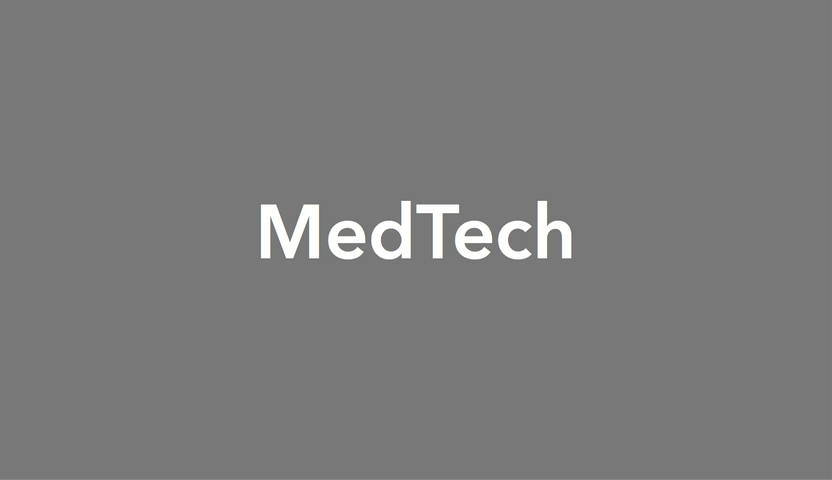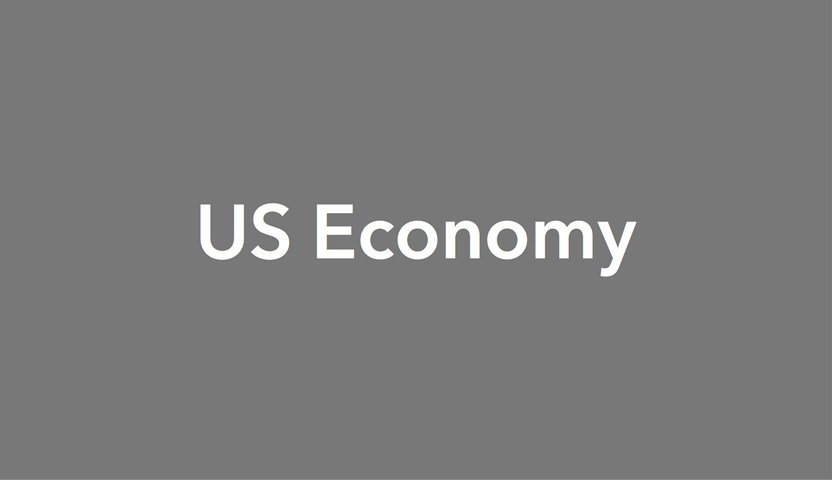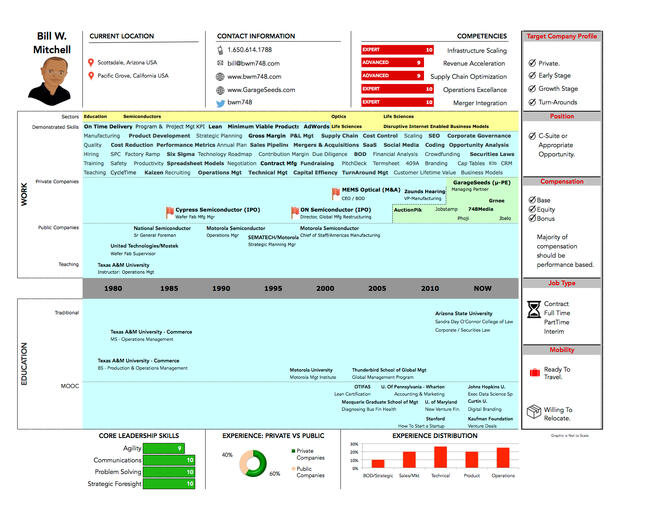
C-Suite Executive
Private Equity
Bill W. Mitchell
C-Suite Executive
Building Strong
Technology Companies
Bill, is a well known and respected senior executive with more than 30 years experience in high technology dealmaking, manufacturing, retailing and leveraging the internet to drive profitable growth.The first half of his career was spent building classic management skills; technology, R&D, manufacturing, supply chain and accounting with the 2nd half devoted to helping companies manage through high change environments, from Venture Capital backed startups like Mems Optical to multi-billion dollar Private Equity funded businesses like ON Semiconductor.
Education
TRADITIONAL EDUCATION
Legal Studies
Sandra Day O'Connor School of Law,
Arizona State University, Tempe, AZ.
Corporate and Securities Law.Master of Science
Texas A&M University - Commerce, Commerce TX.
Operations Management.Bachelors of Science
Texas A&M University - Commerce, Commerce TX.
Production & Operations Management.
MOOC EDUCATION
Executive Data Science Specialization
The John Hopkins UniversityAccounting & Marketing Courses
Wharton School, The University of PennsylvaniaDiagnosing Business Financial Health
Macquarie Graduate School of ManagementSupply Chain Management
Korea Institute of Science and TechnologyLean
OTIFAS
Results
Select Accomplishments
Will be discussed in detail including dollarization depending upon your specific needs.
StrategyManufacturing RestructuringMergers & AcquisitionsSupply Chain OptimizationFundRaising
Raised millions of dollars from professional venture capital investors.Revenue AccelerationProject ManagementLean ImplementationISO ImplementationMarketingCost ControlMerger IntegrationE-CommerceDeliver Profitable GrowthCollaborationCommercial DevelopmentProvide Leadership and Develop TalentLead in Client ManagementBusiness Impact
Skills
COO As A Service
A complete solution for your company.
M&A Merger Integration
Corporate Governance
Supply Chain Optimization
Operations Management
Fund Raising
CashFlow Control
Data Science
AI
Technical
P&L Management
Margins
CashFlow Improvement
Revenue Acceleration
Manufacturing
Project Management
Financial Systems & Controls
Specialized Recruiting
Social Media Campaigns
Leadership
Opportunity Analysis
Data Science
Lean Implementation
Infrastructure Scaling
Strategic
You Get The Results You Expect
Experience
GARAGESEEDS
MANAGING PARTNER
Micro Private Equity Investors and operators. $36MM of assets under management. Purchasers of bootstrapped early-stage businesses, side projects, and startups.
ZOUNDS HEARING
VICE PRESIDENT OF OPERATIONS
A private, venture capital backed manufacturer of hearing aid systems selling direct to customers thru company owned stores.
MEMS OPTICAL
PRESIDENT & CEO
A private, Venture Capital backed of micro-optic and mems components and systems.
ON SEMICONDUCTOR
DIRECTOR, MANUFACTURING RESTRUCTURING
A multi-billion dollar Private Equity purchase of Motorola SPS's discrete semiconductor operations.
MOTOROLA SPS
CHIEF OF STAFF, AMERICAS MANUFACTURING
$1.2B (Revenue) semiconductor manufacturing and assembly factories located across the United States and Mexico
CYPRESS SEMICONDUCTOR
MANUFACTURING MANAGER
A venture capital funded semiconductor manufacturing startup.
Technology and Tech-Enabled
companies contact me when
they have Big Problems or
See Large Opportunities.
In each situation, Jobs and/or
Financials will be impacted
if not resolved quickly.
That's why we offer
"COO As A Service".
COO AS A SERVICE
A Complete Solution
REVENUE
Acceleration
Pipeline Development
Segmentation & Targeting
Customer Lifetime Value
CASHFLOW
Control
Fast, Accurate Closings
Clean Up the Books
Control The BurnRate
MARGINS
Foundation
Cost-Cutting
Product Mgt
New Products
SCALE
Infrastructure
Manufacturing & Operations
Productivity, Lean, Kaizen
Scaling, TroubleshootingSecure Supply Chain
Contract NegotiationsOutSourcing
Sourcing PartnersContract Manufacturing
Asian and North AmericanProject Management
Ontime / OnBudget
PMI Principles
STRATEGIC
The Future
C-Suite Interaction & Support
Business Model Refinement
Performance Management
Mergers & Acquisitions
Merger Integration
FundRaising
Governance
KPI
We Deliver Results
Many Situations Require
Doing More - Faster - With Less
We curate the following
Twitter feeds to stay on
top of Industry trends.
Hand Curated
News Feed
Hire
Bill draws on 20+ years of working with many of the leading technology companies, founders and chief executives; across professions, industries and organizations.The tech world changes quickly; Bill constantly refresh his education, experiences and is always in a learning mode to stay up to date in this fast paced environment.Areas of accomplishment span the full range of business activities. Fundraising, M&A, Contract Manufacturing, Strategy, Operations, New Product Introduction, P&L Optimization, Sales, Marketing, Product-Market Fit & Supply Chain.SECTORS
Technology and Tech-Enabled Companies
Manufacturing • Retail • SaaS • Services
We Deliver Agreed Upon Results: On-Time.
COO "AS A SERVICE"
Not ready for a Full Time COO?Requirements beyond the
capabilities of your staff?Extend The CEOs Reach.
CONSULTING
Most Functional AreasHardware - Software - ServicesStartups to Emerging Growth
C-SUITE: FULL TIME
Apply Fundamentals
To Build Business
PRESS
Available to participate in press interviews.

Bill W. Mitchell
C-Suite Executive
Building Strong Companies
Bill, is a well known and respected senior executive with more than 30 years experience in high technology dealmaking, manufacturing, retailing and leveraging the internet to drive profitable growth.The first half of his career was spent building classic management skills; technology, R&D, manufacturing, supply chain and accounting with the 2nd half devoted to helping companies manage through high change environments, from startups like Mems Optical to multi-billion dollar ON Semiconductor.Texas A&M University Commerce Bachelor and Masters degrees. Attended Arizona State University, Sandra Day O'Connor School of Law. Continual refreshment of finance, operations and technical education.
Musings
Industries
Hearing Aids - The Next Generation 2018
Dockless Electric Scooters 2018
Dockless BikeSharing 2017
Over 150 Mattress In A Box Companies 2018
Robotics As A Service 2017
Technology
IOT Explained Simply - TBD
Machine Learning Explained Simply - TBD
Data Lake Explained Simply 2018
BlockChain Explained Simply 2017
Initial Coin Offerings "ICOs 2017
CryptoCurrency 2014
Tesla Powerwall 2014
Operations
Logistics: Robots & Drones 2017
Supply Chain Performance 2016
Making OKRs Work 2016
Applying Lean 2016
Startup Ecosystem
The GIG Economy 2015
The Problem With Profitless Startups
Terms, Preferences & Control 2017
My Passions
Adventures in Food, Photography & Fun
Machine Learning Explained Simply - 2018
Bill Mitchell
Data Lake Explained Simply - 2018
Bill Mitchell
Last Updated: August 29, 2018An easy way to visualize a data lake is to see it as a large body of water being filled from multiple sources, rivers, streams, rainfall, etc.. the water is in its natural state, from a variety of sources, unfiltered, untreated and with no predefined structure.The lake accepts all types and sources of water. Both structured and unstructured data is stored in the lake. Any data that is put into the lake is retained.A data warehouse is like filling your swimming pool with a water hose connected to your municipal water system. The water is from a consistent source, its been processed and filtered to a consistent format. The data is organized.In a data warehouse only the data that will be used for the case will be retained.An organization may choose to have both a data lake and a data warehouse.
**State of the Electric Scooter Business **
Bill Mitchell
Updated: September 19, 2018Dockless electric scooters "E-Scooters" have blasted their way into the conversation as a legitimate option for convenient, inexpensive, short distance transportation, in urban environments. Bird, Lime and Skip now have more than 60,000 e-scooters on the streets of the United States.Scooter startups are focusing on:- Fundraising, raise money while the sector is hot
- Scaling, get big fast, national, international ahead of the competition
- Partner with ridesharing companies (Uber, Lyft, etc..)
- Inclusion as a ride option on ridesharing companys apps
- Working with cities to develop regulations that do not restrict growth as many cities will limit the number of scooter companies operating within their boundaries
The business model
This business is straightforward,
- Unlike Uber or Lyft the scooter company buys the scooter
- Companies buy generic scooters and customizes them (GPS, security, payment)
- Fully charged scooters in high foot traffic urban areas.
- There is no dock or central charging station
- A customer either sees or uses the app to locate an unused scooter, thenuses the company's app to activate the scooter ($1) and pay for the ride ($0.15/Minute).
- At the end of the ride the customer leaves the scooter in place
- Each night a "charger" locates the scooter via gps, charges it and returns it to the scooter company. It takes 4 to 8 hours to recharge the scooter
- The scooter company redistributes them around the city at the start of the new day. And the cycle repeats.
Supply Chain
Segway-Ninebot, based in Beijing, China is the dominant supplier of e-scooters; manufacturing over 200,000 per month; they sell to most rental companies and directly to the public.Some rental companies (Bird) are testing Electisan scooters, which are reported to be more durable.Companies typically pay $300 - $400 per scooter (before tariffs).Multiple companies are considering ordering components, opening their own factories, and assembling scooters in the USA as a way around the 25% tariff on Chinese scooter imports and to be in control of their supply chain.Bird signed an exclusive agreement to manufacturer a rugged version of Electisan scooters.New Scooter Manufacturers: Minimotors (South Korea), Electisan (China)
What problem are they trying to solve
Last Mile transportation of a single person in an urban environment.Distances too short to wait for a Uber or Lyft and too far to bicycle.
Can this be a profitable business?
| Scooter Financial Model | Today | At Scale |
|---|---|---|
| Acquisition Cost (per scooter) | $415 | $375 |
| LifeTime Rides | 300 | 500 |
| Rides Per Day | 6 | 9 |
| Avg Ride Time Minutes | 15 | 16 |
| Ride Activation Cost | $1.00 | $1.00 |
| Ride Cost Per Minute | $0.15 | $0.15 |
| TOTAL Lifetime Revenue | $975 | $1,700 |
| Payment Processing | $24 | $41 |
| Lifetime charging cost | $375 | $333 |
| Lost/Stolen | $78 | $136 |
| Weather | $117 | $204 |
| Repairs | $143 | $111 |
| TOTAL Lifetime Costs | $736 | $825 |
| GROSS PROFIT | $239 | $874 |
| GROSS MARGIN | 25% | 51% |
PROS
- High Gross Margin
- Easy To Scale
- Low scooter capital cost
- Fits the gig economy model, minimal employees
- Trench: being included on Uber or Lyfts app
- Payback period: 12 to 22 days.CONS
- A NEW 25% tariff will impact
payback periods, profitability and ability to scale
- Low barriers to entry
- Scooters need frequent repairs
- Increased City regulations
- No feature differences
- Long Charging times of: 4 to 8 hours
- Limited Range: ~40 miles per charge, top speed ~15mph equates to a 160 minute runtime.
- 80% utilization (weather, battery health) yields 128 minutes of rider time;
- 6 rides of 15 minutes each is 90 minutes (56% utilization);
- 9 rides of 16 minutes each is 144 minutes (90% utilization).
- Customer Dissatisfaction: above 80% utilization runs the real risk of customer dissatisfaction with dead or low charge scooters. This would force companies to either recharge, swap batteries or take scooters offline during the work day, all expensive options
- Logistics: real time matching of supply w/demand will be the key to higher utilization of the scooters.
- Accidents & Injuries that can result in your insurance companies unwilling to pay. fully release, The scooter companies include language in their user agreements to be held harmless for injury, death, property damage and other losses.
| The Players | Funding | Valuation |
|---|---|---|
| Bird | $415M | $2B |
| Lime | $467M | $1B |
| Spin | $125M | |
| Skip | $6M | |
| CycleHop | ||
| Jump (Uber) | ||
| Lyft | ||
| Ofo | ||
| Razor | ||
| RideCell | ||
| Scoot | ||
| UScooter |
The Product
A fully assembled, customized scooter is inexpensive: $375 to $425.Vandalization, Hacking or Stolen
Theft, vandalization and hacking are all concerns but the companies seem to have those costs built into their profit models.Customers
There may be specific demographics who use scootersContract manufacturers build the scooters to spec for the scooter companiesImpact of Tariffs
A 25% tariff has been imposed on scooters imported from China. If it remains in effect over 6 months, the ride share companies will find ways to minimize the impact, ie assemble the scooters in the USA.Differentation
There does not seem to be any real differences between scooters from different companies.Pricing
Lime: $1 per use and .15 cents per minute
Spin: $1 per use and .15 cents per minuteTrips
Scootermaps.com estimates 240,000 trips taken per day (USA).Safety
Medical emergencies from falls, crashes are a part of using these scooters.The end game
Build a big war chest, Grow fast, get market share, sell out to multi-mode transportation companies.
Case Briefs
OPTICAL COMPONENTS
Full Company Restructure
Summary
VC backed private company was losing $2M cash/month. Products and technologies not aligned with customer needs.Approach
stop the cash bleed, lower the breakeven point, eliminate unprofitable products / customers.Results
Positive Cashflow, refocused product/ market fit, Merged company with lager multinational, ongoing enterprise.
TECH PRODUCTS
Contract Mfging / Product Mgt
Summary
Subcontractor, assembling medical device experienced 66% reject rate at final assembly and test. Thousands of non functional devices representing >$1.1M USD liability to the company, were stockpiled at the subcontractor.Approach
Evaluated product demand, cost, inventory, manufacturing capability and strategic product fit.Results
Shutdown manufacturing of the product, 2 years of inventory on hand, negotiated payoff of $250k USD vs $1.2M owed ($950k savings).
MEDICAL DEVICES
*Strategic: IP Ownership *
Summary
Company >$250k for previous design work.Approach
Verified consultant had satisfactorily completed the work (it was the core of currently shipping products)Results
Saved $152k, negotiated payment of $98k, and exclusive ownership of Intellectual property.
MEDICAL DEVICES
*Scale: Cashflow, Margins, Quality *
Summary
Components sourced around the world with final assembly at subcontractor in China. Company pays for each device shipped from the subcontractor but experiences a ~25% reject rate in the USA.Approach
Identified IP friendly country in existing supply chain, load encrypted final production program into devices before shipping to china.Results
Reduced final test fallout to zero a $2M/Yr cost savings,
SAAS
*Product Rollout *
coming soon
SummaryApproachResults
SEMICONDUCTOR COMPONENTS
Factory Divesture
Summary
Company wanted to close factory but it was sole source of IC components for strategic customers.Approach
Build bridge inventory, move equipment to new supplier, Qualify new factoryResults
Sold factory, sold IP, New factory qualified on time, no negative impact to customer.
TECH COMPANY
*Sell Excess Assets *
Summary
Company had scaled its infrastructure beyond revenue plan. Product mix had changed creating excess assets.Approach
Canceled undelivered equipment. Sold excess equipment.Results
Raised by selling equipment and IP $4.2M USD
Ace The Interview
Bill Mitchell
748Media.com exclusive network, preparing C-Suite Executives for their next job opportunity.
If you want to guarantee your interviews go well do the following:Research the company before the interview.Research each member of the executive team.Research the company’s culture.Role play or practice your questions and answers.Get a copy of the job requirements or request the job specification.Prepare a list of insightful questions to ask interviewers, by job function.Don't Speak negatively about your job or supervisor.Update your resume, bring an electronic copy with you, dropbox.Update your social profiles.Followup, collect contact info.
Technology Trends That Will Define 2018
Bill Mitchell
GarageSeeds.com micro-private equity operator applying fundamental business practices to leading edge business models to build sustainable companies.
ARTIFICIAL INTELLIGENCE (Ai)The Ai infrastructure has reached the point where reality supports the hype. Ai in 2018 will be defined by the fight for control of data. The more data a machine has and can process, the faster it learns. The country / companies who control the data will control Ai. Advances in computing power, the abundance of capital and the vast quantity of data being generated are allowing computers to learn, recognize and respond to trends faster than humans do.The United States currently leads the Ai race but China is aggressively moving to take the dominant position, and may surpass the USA in 2018, over the past half dozen years Chinese companies have tripled their patent submissions and are investing billions in Ai technology.Smartphones are the most widespread data collection devices. There are more smartphones in China than any other country. Chinese consumers are already generating tons of data when they swipe pay with their smartphones but voice interfaces are gaining traction. One area ripe for Ai is healthcare, maybe not robotics in the short term but Ai image recognition will help spot problems earlier and more reliably. is being used to spotChina has enacted data security laws that require foreign companies to store data collected on Chinese citizens within its borders. Self driving cars need high quality mapping data to operate reliably. China is also the largest new car market but it has blocked foreign companies from mapping its roads at a level of detail necessary to make self driving vehicles operate reliably; these restrictions do not apply to Chinese firms. These are examples of data protectionism. Western companies practice many of the same data protection techniques as Asian companies.The McKinsey Global Institute says Ai driven automation may boost China’s GDP by 1% annually.Ai is not without problems in one case researchers tricked self driving cars into misclassifying stop sign by applying paint or tape to the signs causing the vehicles to misclassify the signs.AUTOMATIONIn 1900 there were approximately 30 million farmers, in 1990 that number had fallen to 2.8 million. From a employment standpoint 27 million people lost their job. In reality new types of jobs were created to absorb those 27M people and more. The new wave of automation will have a different twist it will create new jobs in new fields, but probably not enough to offset the ones lost.What’s different this time around? When people migrated from farms to industry: There were help wanted listings in newspapers, family and friends to help guide the way, go to the city and within a couple weeks you had a job paying significantly more, with benefits, than what you made on the farm. Best of all they could use their same skills (muscle, long hours, middle to high school education), plus a little on the job training, so the learning curve was short.This time around the job path forward is not as clear, jobs are posted online, making them easier to see, but there is a skills mismatch between the jobs disappearing and the jobs being created. The new jobs require hundreds to thousands of hours of training to develop proficiencies that the existing workforce does not have.Customer Service, Healthcare, Logistics and Transportation are areas where Automation will accelerate. Machines have already made significant inroads in Assembly lines and Warehousing but other areas such as harvesting fruits and vegetables will see a major uptick in automation since the available labor pool becomes smaller. White collar jobs are already being infiltrated by automation, robots have been introduced into pharmacies and last year bots started writing articles indistinguishable from human authors. In law offices, to prepare discovery, clerks are being replaced by software.There are divergent opinions but over the next 10 years robots could replace nearly 30% of American jobs, with one researcher estimating up to 47% of the US jobs are at risk for automation.Generally jobs that can be defined step by step will become automated over the next few years; accountants, real estate agents, truck drivers, even bricklayers are some of the jobs in danger. Some of the jobs that will be lost are high paying.Foxconn recently announced a $10B Flat panel Display plant in Wisconsin.
The plant is to hire up to 13,000 workers at an average of $53,000 each per year. In reality if the plant is built it is more likely to employ fewer than 2,500 workers. Why? Automation. Seven years ago that plant may have hired 10,000 people but when this fully automated plant comes online it will need 75% fewer workers to produce the same output.Jobs that rely on creativity, empathy, interpersonal skill, and problem solving skills will not be automated for some time: designers, researchers, and some managers.Some industries will be hit harder than others as machines are becoming more intelligent and learn to do more each day.The more intelligent machines become, the more they can do for us. That means even more processes, decisions, functions and systems can be automated and carried out by algorithms or robots.20% of a typical workers time is spent performing well defined tasks in a stable environment, half of those activities will be automated by 2020. The service sector is most at risk for automation, especially food service where 80% of the activities are predictable. Automation in the food service sector will happen quickly. Example, one company is already working to drive robotic food delivery cost under $1 per delivery.If labor pool in a area is exceeds demand (skills, labor supply and the prevailing labor rate is low) a business may decide there is no business case to automate. In that case labor rates will slowly drift downward as the switching costs becomes cheaper.Service robots already serve as shopping assistants, they greet, answer questions and guide customers thru stores. They even help sell real estate. A wide range of industries and jobs will be impacted by the acceleration of automation into our economy.In the United States there are 19 robots for every 1,000 manufacturing workers, in South Korea there are 64 and in China around 7. Robot sales grew around 16% in 2017. This will continue to accelerate in 2018. Hundreds of new robot manufacturers are coming on line and a price war is likely. There will be a fallout and thinly capitalized companies will not be able to adjust to a “Robotics As A Service” RaaS, revenue model. This decreases the upfront capital cost of robot deployment and increases the number of qualified customers.Amazon started a mini arms race when it bought Kiva Systems back in 2012, companies are finally catching up. In 2018, 48% of warehouse fulfilment operations will use robotic systems.Robotics will not be limited to the industrial sector.A wide range of industries and jobs will be impacted by automation in 2018. The first wave machines are taking jobs that can be categorized using the four D’s: dull, dirty, dangerous and dexterity. Humans will no longer do the jobs that machines can do faster, safer, cheaper and more accurately.Dull: Performing the same task over and over again: put caps on bottles,Dirty: Handle toxic waste, navigate sewers, precision farming.Dangerous: Working where humans cannot: handle toxic waste, deep sea exploration, deep space exploration, car assembly, bomb retrievalDexterity: Robots perform precise tasks where a delicate, deft touch is needed: specialized surgeryBOTTOMLINE
Will Ai and Automation create more jobs than they displace?
The migration from a farm based society to an industrial one happened slowly, moving people from one type of unskilled job to another unskilled job. This switch is different, more compressed, both skilled and unskilled jobs are affected.If you look at a job and cannot immediately tell where a human adds value then that job will become automated.
Why Should I Hire You?
Bill Mitchell
748Media.com is an exclusive network of experienced C-Suite Executives actively and passively preparing for their next career opportunity. This article is written for senior executives but can be adapted to fit most job functions.
"Why Should I Hire You" is a common interview question it is usually asked during a fact to face interview, after a hiring manager has short-listed you. He / she has an interest and now wants to dig below the surface to see how good of a fit you are and if they like you.This is a question you need to NAIL as It gives you the opportunity to control your narrative by mapping your accomplishments, strengths, motivations and personality to the expectations of the interviewer.Remember to customize your delivery and show how the interviewer or his / her organization will benefit from you coming on board.Tell your story in a way that the interviewer can visualize you as the best fit.First, take a moment to mentally review any job requirements or specs you have knowledge of then quickly review your conversations to date.Be certain your social profiles and written documents are consistent with the story you tell.During the interview flush out concerns the interviewer may haveDo your homework, know the situation of the company, the industry, the environment.Is this the hiring manager? How much influence does this person have in the organization? What is his/her background? What is the culture of the company? What are they really looking for? It the business a success or has it fallen on difficult times. Remember fortunes can change overnight.A Hiring managers thinking is as follows::
Can I manage this person?
Can he/she perform the requirements of the job?
Will this person be excited about working here?
Will this hire make me look good?Your main focus will be to show how you will contribute to the company. Don't just list your past accomplishments, summarize the near term challenges of the job, the business environment, tell a few specifics about what you will do to get the company on track.
Tricky Interview Questions
Bill Mitchell
748Media.com is an exclusive network of experienced C-Suite Executives actively and passively preparing for their next career opportunity. This article is written for senior executives but can be adapted to fit most job functions.
You may be asked some or all of the following questions. Become familiar with them and develop answers you are comfortable with. Practice your delivery until it becomes natural.
What can you do for us that someone else can’t?Tell me about an accomplishment you are especially proud of.What have you not accomplished in your current job that you wish you had?Tell me about a time you made the wrong decision.What are your failures and what did you learn from them?What would you want to accomplish in your first 90 days in this job?It’s been a long time since you upgraded your education, how do you stay up to date on the latest trends?How would a former manager describe you?Tell me about a time you handled an angry or difficult customer.What are your salary requirements?What is your current salary?What salary do you think you deserve?Describe a time when you disagreed with your boss.What are your hobbies?Why were you promoted when others were not?Describe the first time you fired someone. The most recent time you fired someone.What should I know about you that I haven’t already asked?Describe your management style, your leadership style.Do you like sales?Describe an interesting problem and how you solved it.What excites you? Describe yourself.Tell me about a book you recently readWhat tools or systems do you need in order to be successful?What is your favorite movie of all time?How did you prepare for this interview?What on your resume is the closest thing to a lie?
Questions To Ask Interviewers
Bill Mitchell
748Media.com is an exclusive network of experienced C-Suite Executives actively and passively preparing for their next career opportunity. This article is written for senior executives but can be adapted to fit most job functions.
These questions are listed in no particular order and should be asked in the general flow of a conversation. Some of the questions are similar. Choose the ones you like and adjust them to your style of speech.
All Companies
What are your selection criteria?What skills are necessary to be great at this job?What are the immediate challenges of this position?What process will be used to evaluate my performance?Why is this position open? Where is the person who was previously in the position?What are the things I need to do to be successful?What issues or challenges about your job “the interviewers” keep you up at night?What’s your turnover rate?Can you describe the role of this position and the key success requirements?What’s your timeline for the next steps?What’s your timeframe for making the hiring decision?Describe the general culture of the company.May I contact you if I have additional questions? Note: Get contact info or business card.
Private Companies
How much cash do you have in the bank?Are your financials current? If not what is the most recent month you closed the books?Who are your investors?What is your monthly burn rate?Who are your top customers?Can I see a live demonstration of your product?Can I review your Cap Table?
Get Around Illegal Interview Questions
Bill Mitchell
748Media.com is an exclusive network of experienced C-Suite Executives actively and passively preparing for their next career opportunity. This article is written for senior executives but can be adapted to fit most job functions.
The object of an interview is to move toward a written job offer.
In my experience, the more senior the interviewer the less likely he/she is up to date on the latest interview techniques and the interviews themselves are informal than junior level interviews.Let’s say you are in the middle of a discussion and the interviewer asks a question you think is illegal, such as:
What country were you born?
How old are you?
What is your religion?
Do you have a disease that cause ….Don’t overreact, the stakes are high, many times the misstep is unintentional. Many senior executives were trained years ago. That is no excuse, its reality. If you get the job you can change the culture and implement training procedures and a structured hiring process. Another thought, this may be an intentional stress test to see how you react.One technique you might use: I’d be happy to answer your question but can you give me a little more insight how this question relates to the job, that way I can give you an answer that extinguishes any concern you may have.Or you might say, Is your company having an issue in this area that needs to be addressed, if so, could you give me your perspective of the problem?The more difficult illegal question is the one that’s in the interviewers mind and is never asked. Lets say you had a accident as a child that left you with a limp, you use a cane. The interviewer may wonder about your stamina or ability to travel. During your discussions hit those areas really hard, don’t leave any doubt about your stamina or travel ability.The key is to not make an interview combative, you must take control of the situation and steer the focus back to you, your accomplishments and your fit.There are many more techniques we can teach you.
Bitcoin: 2018 Update
Bill Mitchell
GarageSeeds.com micro-private equity operator combining fundamental business practices with leading edge business models to build sustainable companies.
It’s 2018 and Bitcoin’s price is fluctuating wildly. Members of the bitcoin foundation are fracturing, startups are shutting down, bitcoins are being stolen from wallets. I wrote this in 2014, some things have changed and some have remained the same.WHAT IS A BITCOINA Bitcoin is a type of virtual currency without all of the attributes of a traditional currency specifically you obtain them by mining or purchase them with traditional currency (issued by governments) or by trading goods or services for them.In early March 2014, the total market cap of the most widely circulated Cryptocurrencies was approximately $11B, by January 2018 the market cap for cryptocurrencies is $700B and projected to reach $2 Trillion by the end of 2018. Bitcoins represented about $200B of the current market cap for cryptocurrencies.One survey, by Lendedu, say 79% of Americans have heard of bitcoin.BUMPS IN THE BITCOIN ROAD OR LONG TERM DECLINEBitcoin had a great 2017, starting the year around $800 and peaking at $20,000 in December but it recently crashed to $11,500 (January 2018) all coins are down, it’s not just bitcoin.Longer term the biggest problem seems to be political, as several countries seek to control or outlaw cryptocurrencies. China, South Korea and Russia are all contemplating crackdowns on cryptocurrency exchanges, services and trading. Almost 60% of bitcoin mining is in China.PRICING HISTORYThe bitcoin network came into existence Jan 03, 2009 created by Satoshi Nakamoto, whose real identity is unknown. A bitcoin was originally worth less than a cent, by March 2013 they were trading at $30/each, a month later they peaked at $260 and today they are worth in 2014 they were $122/each and now they are worth $11,500/each; There are currently approximately 16.8 million bitcoins in circulation that number will increase each year until the year 2140 when the upper limit of 21 million bitcoins will be in circulation.IS BITCOIN A GOOD CONSUMER CURRENCYBitcoin transactions are typically referred to as anonymous. While it may be possible to obscure your identity in many cases you can be identified.Few merchants currently accept bitcoin. The Dallas Mavericks NBA team recently announced they will accept bitcoin next year but Stripe is cancelling its support of bitcoin.Bitcoin transactions are slow, Visa can process 24,000 transactions per second; Paypal 193, bitcoin 7. it can take 10 to 20 minutes for blockchain to confirm a transaction; but companies are working to speedup the network and decrease transaction time.Wide price swings make it difficult to use for payment.Bitcoin wallets can be complicated to use.Bitcoin transaction fees, for sending bitcoin, can be as high as $37.Of note, approximately 2.8 million to 3.8 million bitcoins have been lost forever. When you lose a bitcoin it is usually not recoverable.As it stands today, it’s a difficult currency to use in the real world.RISKBitcoin has five major downsides:(1) volatility, the value of a bitcoin is not static;(2) security, there have been several documented cases of Fraud and theft, Some bitcoin exchanges have been hacked and some have shutdown without refunding customers money; a successful hack of the blockchain (the technology that records and verifies every transaction) would be a potentially fatal problem.(3) competition Ripple, a competitor is trying to gain traction. Venture capital is pouring into bitcoin companies. Adam Draper who runs Boost, a startup accelerator is looking for 7 bitcoin companies;(4) public policy, while virtual currency is legal in the United States, it has not been given a governmental seal of approval. Regulatory roadblocks, not demand may be the biggest hurdle keeping bitcoin from going mainstream. Several countries are cracking down on cryptocurrency, among them are South Korea,(5) the network is slow and difficult to use and who wants to spend bitcoin today when its value may double next week.GETTING STARTEDTo get started you need a software wallet, there are dozens of options. Your wallet contains two sets of keys: Your private key keeps track of your bitcoin(s). Your public key allows you to transact with the outside world. Note: if you lose your private key, or its hacked, your bitcoin(s) most likely cannot be retrieved. To get bitcoins you either sell something and receive bitcoin in return, purchase or mine them.INITIAL COIN OFFERINGS / ICOInitial coin offerings “ICOs” are one of the newest ways for companies to raise money, in fact they raised over $3.6B selling digital tokens in 2017.In 2017, ICOs raised over $3.6B in digital tokens, reflecting a faster pace than that of any other early-stage venture capital funding source.Here’s how an ICO works, a new cryptocurrency is created on a protocol such as Ethereum,
a value is arbitrarily assigned by the startup based on what they think the network is currently worth. The ultimate pricing is arrived at by network participantsSUMMARYCurrently the people who are most bullish are the early bitcoin owners who are "in the money" they are essentially betting bitcoin values will increase.For the next couple of years bitcoin may be a victim of its own success, the huge price swings caused by speculation may get worse. The newness is wearing off only 14% of Americans own bitcoin. The bitcoin ecosystem will is growing improving and stabilizing.2018 is shaping up to be a wild ride for bitcoin investors.
Startup: Terms, Preferences & Control
Bill Mitchell
GarageSeeds.com a micro-private equity operator combining fundamental business practices with leading edge business models to build sustainable companies.
Use Caution When Feeding A UnicornUnicorns, companies with billion dollar valuations while still rare are being created at a faster pace. Startup founders who own stock worth over a billion dollars is rarer. The reason may be a function of how unicorn companies are funded.Unicorns are hatched when a team with an idea (product, service or app), that hundreds ofmillions or billions of people might potentially use, participates in a seed incubator. The incubator places a non-negotiable investment (amount, valuation, terms, preferences) in the new company. At this point the company usually has no or minimal revenue. The company gains traction; strong user growth and stickiness validate the product/ market fit.Within 3 years the founders have convinced multiple investors to place hundreds of millions of dollars, spread over multiple funding rounds, into the company. The stock price, which was originally pennies per share usually rises 2X or more with each new round of funding.Private investor money is not free, down the road, they expect an exit event (IPO, Merger) that will pay them many multiples of their original investment.Valuations on startups that are well above those of more established companies (sometimes even Venture capital investors placein the same space) and typically years before the startup develops a reliable revenue stream or GAAP positive earnings. There are expectations, by all, that the company will grow into and surpass these aggressive valuations.One would think given the multi-billion dollar startup valuations newly minted billionaire founders would be created at an increasing frequency. That is not as easy to accomplish as it might seem. The primary reason is dilution, each funding round decreases the founders ownership of the company. The other reason which doesn't get as much attention are the debt and equity investments terms and preferences. Depending on how well the company performs, these can have a substantial impact on the founders net worth.
10X return with no riskIn most unicorn situations investors own a majority of the company. Beginning with their initial investment, they look for ways to reduce their downside exposure: loans, convertible notes, preferred stock all serve to put the investor(s) in position to be paid ahead of founders / common stock holders if the company doesn't grow as planned. Venture capitalist invest money raised from limited partners. They are placing large amounts of money into the hands of companies with little revenue and no profits.Most founding teams are not expert term sheet negotiators while most investors are expert term sheet negotiators this is their core job. Founders tend to be optimistic and only see upside potential. That's partially why they start companies. They may not fully comprehend the impact of the funding documents they sign especially in a less than optimum exit or down round situation.Investors in early stage ventures tend to be risk adverse even though by definition investing in a startup is risky. Starting with the term sheet, investment documents set the boundaries for how much money each party will receive in various exit scenarios.
While initial funding may have come from an Angel or VC investor as the capital needs become larger, hedge funds, mutual funds and other sophisticated investors will likely participate. We tend to think of investors acting as a tight knit group but their interests may be divergent. It depends when and under what terms they invested.For example, a cap table (Accounting Ownership) may show the founders own 30% of the
company stock, however, if they have raised several rounds of funding with convertible notes, common stock, preferred stock, and debt, the founders payout (Economic Ownership) may be significantly less, even $0, it depends on the sales price and terms negotiated in each funding round.Before signing a term sheet create a cap table waterfall. It should show all prior funding (debt and equity) and the current contemplated funding. Pick a range of Low, Medium and High exit values. The Low scenario should be low enough no one is happy; the Medium scenario should show some happiness; the High scenario should show everyone thrilled.
Calculate the payout EACH preferred stockholder, each debt holder and each common stockholder would receive in each of the 3 scenarios. Remember preferred stockholders and debt holders are paid before common stock holders.Don't be surprised if your economic ownership is smaller than the accounting ownership
indicates.Bottomline: It's critical that the CEO/Founders ensure the core and extended team have enough Economic Ownership to be sufficiently motivated.
Tesla Powerwall Economics 2015
Bill Mitchell
GarageSeeds.com a micro-private equity operator combining fundamental business practices with leading edge business models to build sustainable companies.
NOTE: We will update this in 2018 as the economics of the Tesla Powerwall seems to have changed.Tesla wants to disrupt the way our homes are powered but are their batteries economical for households use? PowerWall batteries have capacities of 7 and 10 kilowatt-hour (kWh) and cost between $6,000 and $7000 USD including installation. They are able to discharge continually at 2 kWh for 3.5 to 5.0 hours.Assuming no other forms of power were available, a home that consumes 6 kWh at peak would need to purchase 3 units or reduce its energy consumption to extend battery life at a cost between $18,000 and $21,000.The homeowner must decide the intended use for the batteries:1. Provide power in an emergency outage.
a. If the power outage lasts fewer than 5 hours the PowerWall can
deliver enough energy.
b. If the outage lasts over 6 hours the homeowner will need to cut
energy consumption to have power available thru the night.2. Provide power routinely when solar or wind power not available.
a. Assuming 12 hours per day without solar/wind power (6pm-6am),
i. the homeowner will need to cut electrical consumption by 50-60% when using the batteries.
ii. or purchase an additional PowerWall ($7k) ($28k total)Another option is to spend ~$4,000 to purchase a 16 kWh gas powered generator.The annual capacity cost of PowerWall batteries is $0.3 per kWh, in the USA only Hawaii has an average electrical rate ($0.37 kWh) that makes the PowerWall economical.European electrical rates average $0.35 kWh, it makes sense to install PowerWalls there.
Cryptocurrency: Whats Driving the Boom
Bill Mitchell
GarageSeeds.com a micro-private equity operator combining fundamental business practices with leading edge business models to build sustainable companies.
As of early March 2014, the total market cap of the most widely circulated Cryptocurrencies is approximately $11 billion USD; bitcoin represents about $8.2 billion of that.Monday March 3rd, bitcoin startup, Flexcoin who billed itself as the first bitcoin bank,
announced it was shutting down following the theft of almost 900 bitcoins worth over
$600,000 USD. This comes on the heels of Mt. Grox losing ~850,000 bitcoins worth
~$500MM USD and filing for bankruptcy protection.These problems will not in themselves stop bitcoin but do the portend a deeper
problem? On one hand hackers seem to be relentless on the other hand we can look at
payment giant Paypal (not a bitcoin company) has been able to keep the hackers at bay.The knee jerk reaction would have government regulate and oversee cryptocurrencies.
Janet Yellen chair of the Federal Reserve has already told congress bitcoins are outside
the banking system and therefore cannot be regulated. "There is no central issurer or
network operator to regulate".Bitcoins and other cryptocurrencies act as worldwide currencies without regulation. That
is good and bad. Good because weak companies and flawed practices will be exposed.
Bad because this will cause short term pain, people will lose money because of unanticipated risks.There is little recourse if someone steals your bitcoins. These are not the 1st bitcoin companies to suffer losses and will probably not be the last. These problems seem to be with the lack of controls at the affected companies and not problems with the bitcoin protocol.THE PAST
Bitcoin surpassed Paypal in daily transaction volume $416M vs $397M.Back in October, the FBI shutdown Silk Road (a website on the Tor network) the
underground marketplace where users could buy cocaine, heroin, meth, and more
using the virtual currency Bitcoin. They also siezed 26,000 Bitcoins worth about $3.2
million dollars. The value of all Bitcoins immediately dropped by ~20%.Here is a link to an article describing the alleged illegal activities at
The shutdown of Silk Road illustrates some of the inherent instability and price swings
of Bitcoins. Shutting down Silk Road is a good thing for Bitcoins investors, it paves the way for more Bitcoins to be viewed as a mainstream medium for conducting transactions.History
The bitcoin network came into existence Jan 03, 2009 created by Satoshi Nakamoto,
whose real identity is unknown. A bitcoin was originally worth less than a cent, by March
2013 they were trading at $30/each, a month later they peaked at $260 and today they
are worth $122/each; There are currently approximately 11.2 million bitcoins in
circulation that number will increase each year until the year 2140 when the upper limit
of 21 million bitcoins will be in circulation.Bitcoin transactions are typically referred to as anonymous. While it may be possible to
obscure your identity in many cases you can be identified. Few merchants currently
accept bitcoin. The real opportunity starts when there is mass adoption of bitcoin by
merchants looking to escape high ATM/credit card transaction fees. Currently the
people who are most bullish are the early bitcoin owners who are "in the money" they
are essentially betting bitcoin values will increase. More people are using the currency,
in April, a record, $1 billion in bitcoin changed hands.Bitcoin has four major downsides: (1) volatility, the value of a bitcoin is not static; (2)
security, there have been several documented cases of Fraud and theft, Some bitcoin
exchanges have been hacked and some have shutdown without refunding customers
money; (3) competition Ripple, a competitor is trying to gain traction. Venture capital is
pouring into bitcoin companies. Adam Draper who runs Boost, a startup accelerator is
looking for 7 bitcoin companies; (4) public policy, while virtual currency is legal in the United States, it has not been given a governmental seal of approval. Regulatory
roadblocks, not demand may be the biggest hurdle keeping bitcoin from going mainstream.Getting Started
To get started you need a software wallet, there are dozens of options. Your wallet contains two sets of keys: Your private key keeps track of your bitcoin(s). Your public
key allows you to transact with the outside world. Note: if you lose your private key, or
its hacked, your bitcoin(s) most likely cannot be retrieved. To get bitcoins you either sell
something and receive bitcoin in return, purchase or mine them.Investors
High profile venture capitalists such as Andreessen Horowitz and Union Square
Ventures have invested in virtual currency related companies. Established players such
as Google and PayPal have taken notice of bitcoin. Google is supporting Opencoin.
PayPal is teaming with OANDA.Summary
For the next couple of year’s bitcoin may be a victim of its own success, the huge price
swings caused by speculation may get worse. Once the newness wears off the currency
may reach its potential but significant obstacles remain: government policy, security
and competition but the bitcoin ecosystem will grow and improve and eventually
stabilize the bitcoin.
Linkedin For Senior Executives
Bill Mitchell
748Media.com is an exclusive network of experienced C-Suite Executives actively and passively preparing for their next career opportunity. This article is written for senior executives but can be adapted to fit most job functions.
Where does Linkedin fit in the senior executive’s online presence? Is it your Resume? your network? Your branding tool? It can be these things and more. How you position your profile depends on a variety of factors, is your search low profile? Confidential, One thing is certain, your profile is not a stand alone tool, it needs support, it is not a resume.Update your profile at least once per year or more often if appropriate.:Header
Include your job title and a short high level overview of your experience. It should talk to your target audience.Use Your Real NamePhotograph
Upload a recent business quality headshot photo. Strongly consider using a professional studio photographer. Profiles without photos are usually ignored by recruiters and hiring managers.Summary
Show your value, dollarize, use numbers, hiring managers and recruiters zero in on this section; it should be keyword rich but informative and to the point. Ideally your summary should be 3-5 short paragraphs, preferably with bullets. Write in the 1st person.Experience
Include companies you worked for, when and in what capacity. Tell results achieved. Show current skills not dated skills.Education
List the educational institutions you attended even if you did not graduate. Be clear about degrees earned. Be careful with dates, it is not necessary to indicate when you received degrees, that can indicate your age in some instances.Interests, Volunteer Experiences or Languages
Showcase uniques experiences that set you apart from the crowd.Personalize Your Linkedin URL
It makes you look more professional, more memorable.Become an Author
Write, publish your work on Linkedin, share your unique perspective of recent industry developments.How to connect with me on LinkedinSend me a personal note that gives me a reason to connect with you. If I don’t know you and you don’t take the time to write a note, I won’t connect with you.Do business with me, I like connecting with people I know.Get referred by someone I know and trust.Connect With Bill on Linkedin
Template
Title
Bill Mitchell
GarageSeeds.com a micro-private equity operator combining fundamental business practices with leading edge business models to build sustainable companies.
748Media.com is an exclusive network of experienced C-Suite Executives actively and passively preparing for their next career opportunity. This article is written for senior executives but can be adapted to fit most job functions.
Body Text - Body Text
Contact
C-Suite Executive
Fixing: Startups, Emerging Growth & Turnaround Companies.
Email Me
Scottsdale, Arizona USA
MEGATRENDS: 2019
Data Science Feed
Machine Learning
Executive Guide To Machine LearningEducation
Certificate In Data Visualization
Best And Worst Graduate Degrees For Jobs
What Does It Take to be a Data Scientist or Analyst
Startup Institute Is Launching a Data Science CourseGeneral
What Data Scientists Really Do,
According to 35 Data ScientistHow Analytics Can Be Misused
Data Mining, Visualization and InfographicsTools
Bouquet - The Open-Source Analytics Toolbox
Data Visualization Catalogue
10 Free Data Visualization Tools
38 best tools for data visualization
31 Free Data Visualization Tools
AI / Robotics Feed
Machine Learning
Executive guide to machine learningWorkforce Trends
2017 In Review 10 Ai Failures
In 30 Years robots will be half of the workforce
The Long-Term Jobs Killer Is Not China. It’s Automation
CleanTech / Environment
Air, Water, Wind
Solar, Energy Storage
Pollution
Solar
Is the Tesla Roof Worth the CostEnergy Storage
New plants show lithium-ion storage ready to power grid.
Powerwall Lets Homes Run Entirely On Solar Energy
Samsung EV battery gets 300+ miles from a 20-minute charge.
CrowdFunding Feed
Equity Crowdfunding
Regulation Crowdfunding
Revised Rule 504
Rule 504 of Reg D: Small Entity Compliance Guide for Issuers
SEC Regulation CrowdFunding
BlockChain/Crypto/ICO Feed
Bitcoin / Crypto Currency
How Bitcoin Actually Works
Bitcoin Is Eating Itself
How To Buy Bitcoin Anywhere in the worldBlockChain
How Blockchain is overshadowing Bitcoin
Blockchain A-Z: Everything You Need to Know
The Truth About Blockchain
Blockchains: How They WorkICO
Guide to launching a Initial Coin Offering ICO
ICO 101: How To Do A Initial Coin Offering Right
EdTech Feed
Coding Classes
Want a Silicon Valley job? Keep Away From Coding Schools
You might not need that $15K coding bootcamp
We asked 15,000 people how they learned to code
Startups Feed
FundRaising
Multi Round Fundraising StrategyDown Round
Confronting A Down RoundSeed Financing
Convertible Seed Notes83b Election
What Is An 83(b) Election and When Do I Make It?
What Is An 83(b) Election And When Shouldn’t I Make It?409a Valuation
409A Considerations for Startups
What Every Founder Needs to Know About 409A Valuations
eShares: 409a Valuation as a ServiceCap Table
Broken Cap Tables
eShares Paperless Stock Certificates & Cap TrackingFinance
The Tricky Business Of Balancing Early Startup Finances
What I Learned About Venture Funding
Make Your Financial Model Stand Out to Investors
SeriesSeed Documents
YCombinator Safe Financing DocumentGeneral
Keep these documents up to date.Legal
Orrick - Startup Legal Forms
Clerky Legal Concepts Handbook
UpCounsel free legal documents
Startup Lawyer Legal Docs For Tech Startups
Key Legal Docs for BusinessOption Pool
Option Pool size in early stage company
Option Pool Shuffle
Negotiating The Option PoolKeeping Score
Run Your Company Based on MetricsStock
What I Wish I'd Known About Equity Before Joining A Unicorn
Questions to Ask Before Accepting Startup Stock Options
How startup options work
Stock Plan Used by YC CompaniesStock Options
Stock Options: Nonqualified vs. IncentiveTerm Sheet
Founder Friendly Term SheetTrademark
Low Cost Trademark ProtectionValuation
Liquidation Preferences
Term Sheet Liquidation PreferencesSecurity
What Security will VCs WantRegistration Rights
What are Registration Rights
Medical Tech Feed
US Economy Feed
US Economy
US clean energy funding gutted, 13M high paying jobs to China.
Transportation Feed
Autonomous Vehicles, Scooters,
Electric Vehicles, Bikes
Electric ScootersBird Scooter EconomicsWhat Drives Value at Scooter StartupsAre scooter startups really worth billions
Gig Economy
Gig Workforce
Six-Figure Earners, a Growing Share of the Gig Workforce
INFOGRAPHIC
RESUME

Privacy Statement
We do not share your personal info with anyone without your consent.We use a minimal number of analytics trackers to determine web site performance. Currently we use stat counter and google analytics. Over time we may change to others, if we do we will update this privacy statement.







